While exhibitions of works by Qi Baishi (
Entitled Qi Baishi: The Big Exhibition (
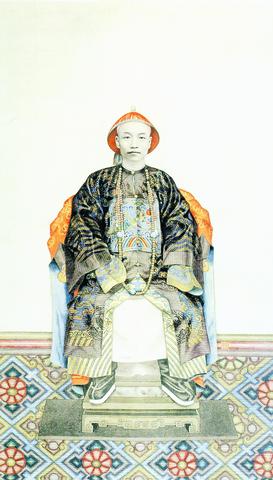
PHOTO COURTESY OF CHINA TIMES PUBLISHING
A majority of the works on display in the memorial hall's second-floor exhibition hall have been loaned to the center by Beijing's China Fine Arts Museum (

"It's a great honor to have been allowed to exhibit so many of his works that have never before been seen in Taiwan," said Chen Hsiao-chun (
Long before his death at the ripe-old-age of 96 in Beijing on Sept. 16, 1957, Qi had captured the hearts and minds of art enthusiasts the world over. Along the way, Qi also set the wheels in motion for a revolution in the once predominantly black-and-white world of Chinese popular art.
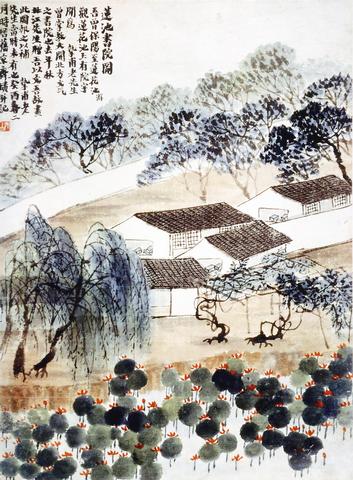
PHOTOS COURTESY OF CHINA TIMES PUBLISHING
While often seen in photographs bedecked in the long flowing robes typical of an early 20th century Mandarin and sporting a long wispy beard, this image of Qi might exemplify that of a Chinese artist of the period nowadays, but this certainly wasn't always the case.
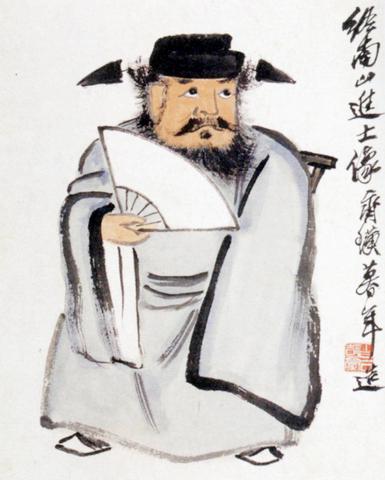
During his early years as a painter Qi was considered by many as a reactionary. Many in fact considered him a young man hell-bent on undermining decades of tradition and creating works that went against the grain, especially those within the conservative two-tone Chinese art establishment.
"He shook the art world to its foundations when he began to add color to his works," continues Chen. "Other artists had used colors, but only here and there. Qi's use of deep red was more pronounced and much more powerful." A woodcarver in his early years, Qi, or Chunzhi (
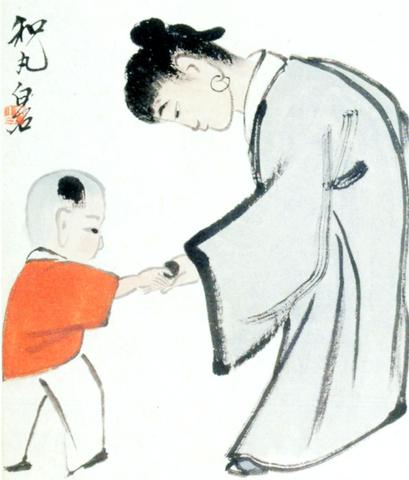
Leaving home in 1902, Qi wandered around many of China's famous mountain ranges, lakes and rivers. When, in 1910, he finally returned to his native Xiangtan (
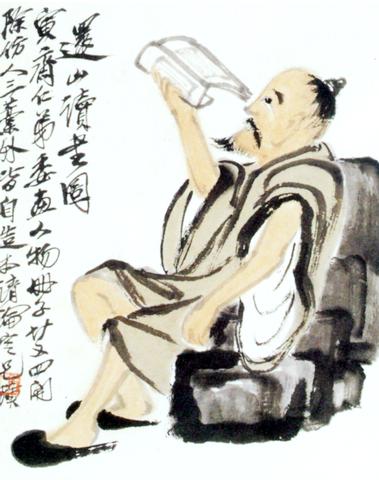
Moving to Beijing in 1918, Qi began veering away from the traditional style of black ink painting and calligraphy. While continuing to paint flowers, birds, insects and fish Qi adopted his own unique styles, many of which stem from his humble un-scholarly roots.
"Unlike other artists of the day, many of whom had been born to city-dwelling aristocracy, Qi was from the countryside. Because of this, his many early works depicting nature were created with a unique insight into the environment he created in ink," said Chen. "He added feelings and got inside the subjects he painted rather than simply reproducing the sights he saw verbatim."
Although Qi settled down to life in the city, the styles in which he created his images were constantly changing. Whereas his early works possess a later-day cartoon-esque feel, by the early 1920s Qi had adopted a more serious and realistic approach to his work.
Once reported to have said "I learned finger-painting in my youth, landscape painting after 30 and specialized in flowers, insects and birds after 40," Qi's many changing moods and styles are the underlying theme of the current exhibition.
"We've focused on Qi's works from 1911 through 1957 because they show how he developed and was constantly changing styles in order to best capture the images he saw," said Chen. "When you follow the exhibition from the earliest work produced in 1911 to Qi's later works, the change in styles and his artistic development becomes obvious."
Continuing to develop his style throughout the 1930s and 1940s, Qi was elevated to the position of a national icon in 1953, when the Ministry of Culture of the People's Republic of China conferred on him the honorable title of "People's Artist."
And while Qi's images captured the imagination of art lovers the world over, the artist's biggest international accolade came in 1955, when he was awarded the World Peace Prize by the World Peace Council.

April 28 to May 4 During the Japanese colonial era, a city’s “first” high school typically served Japanese students, while Taiwanese attended the “second” high school. Only in Taichung was this reversed. That’s because when Taichung First High School opened its doors on May 1, 1915 to serve Taiwanese students who were previously barred from secondary education, it was the only high school in town. Former principal Hideo Azukisawa threatened to quit when the government in 1922 attempted to transfer the “first” designation to a new local high school for Japanese students, leading to this unusual situation. Prior to the Taichung First

When the South Vietnamese capital of Saigon fell to the North Vietnamese forces 50 years ago this week, it prompted a mass exodus of some 2 million people — hundreds of thousands fleeing perilously on small boats across open water to escape the communist regime. Many ultimately settled in Southern California’s Orange County in an area now known as “Little Saigon,” not far from Marine Corps Base Camp Pendleton, where the first refugees were airlifted upon reaching the US. The diaspora now also has significant populations in Virginia, Texas and Washington state, as well as in countries including France and Australia.

On April 17, Chinese Nationalist Party (KMT) Chairman Eric Chu (朱立倫) launched a bold campaign to revive and revitalize the KMT base by calling for an impromptu rally at the Taipei prosecutor’s offices to protest recent arrests of KMT recall campaigners over allegations of forgery and fraud involving signatures of dead voters. The protest had no time to apply for permits and was illegal, but that played into the sense of opposition grievance at alleged weaponization of the judiciary by the Democratic Progressive Party (DPP) to “annihilate” the opposition parties. Blamed for faltering recall campaigns and faced with a KMT chair

Article 2 of the Additional Articles of the Constitution of the Republic of China (中華民國憲法增修條文) stipulates that upon a vote of no confidence in the premier, the president can dissolve the legislature within 10 days. If the legislature is dissolved, a new legislative election must be held within 60 days, and the legislators’ terms will then be reckoned from that election. Two weeks ago Taipei Mayor Chiang Wan-an (蔣萬安) of the Chinese Nationalist Party (KMT) proposed that the legislature hold a vote of no confidence in the premier and dare the president to dissolve the legislature. The legislature is currently controlled